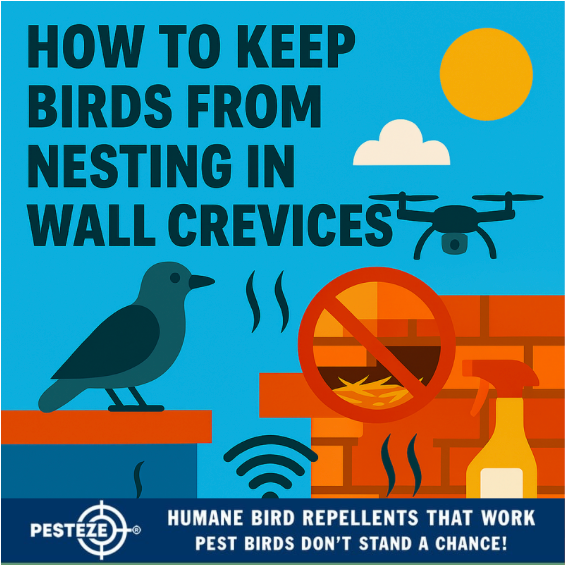HOW TO KEEP BIRDS FROM NESTING IN WALL CREVICES

HOW TO KEEP BIRDS FROM NESTING IN WALL CREVICES
SUMMARY
Bird nesting in wall crevices can cause significant structural damage, health risks, and costly home repairs. This comprehensive guide provides homeowners with advanced, humane strategies to prevent and address bird nesting problems in 2025.
FEATURES
- Structural Protection: Stops birds from creating nests in vulnerable wall spaces, preventing potential structural compromise and damage.
- Health Safety: Eliminates potential disease transmission risks associated with bird nests, reducing allergen accumulation and preventing respiratory hazards.
- Humane Deterrence: Provides non-invasive techniques that protect both property and wildlife, ensuring ethical bird management.
- Advanced Detection: Utilizes modern technologies for identifying and preventing potential nesting sites before they become problematic.
- Cost-Effective Solutions: Implements preventative measures that save significant money on potential repairs, cleanup, and long-term maintenance.
GUIDE DESCRIPTION
Wall crevices represent prime real estate for nesting birds, offering shelter, warmth, and protection from predators. These seemingly innocuous nesting spots can create significant problems for homeowners, ranging from structural damage to potential health hazards. Understanding the complex behaviors of birds and their nesting preferences is crucial for effective prevention.
Property owners must conduct a thorough and comprehensive inspection to identify potential nesting sites. Critical areas of concern include exterior wall gaps, roof edges, ventilation points, window frames, and any structural openings that might provide shelter. The key is to approach bird prevention with a strategic and systematic method that combines physical barriers, technological solutions, and proactive maintenance.
Modern prevention techniques leverage both traditional and innovative approaches. Physical barriers such as stainless steel mesh covers, professional-grade sealants, and strategic repairs can effectively block bird entry points. Simultaneously, advanced technologies like ultrasonic repellent devices, motion-activated systems, and smart sensor networks provide additional layers of deterrence.
Legal considerations play a significant role in bird nest management. Many bird species are protected by local and federal regulations, requiring homeowners to approach nest removal and prevention with careful consideration. Professional consultation and adherence to wildlife protection guidelines are essential to ensure both property protection and ecological responsibility.
Long-term prevention demands consistent maintenance and vigilance. Seasonal property inspections, prompt repairs, and landscape management can significantly reduce the likelihood of bird nesting. Trimming trees and bushes that provide easy access to wall crevices, maintaining clean exterior spaces, and addressing potential nesting sites immediately are critical strategies.
By integrating proactive prevention, smart technologies, and responsible maintenance, homeowners can effectively protect their properties from unwanted bird nesting while maintaining a humane and environmentally conscious approach.
- Pukhraj Sharma


Comments 0